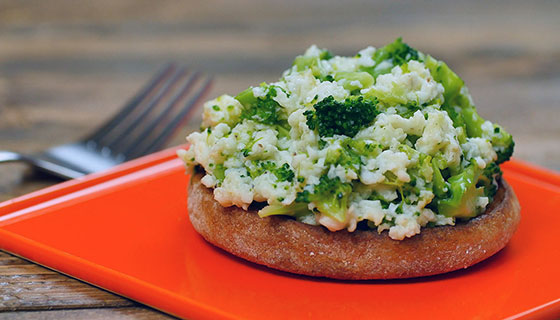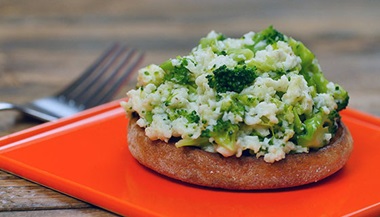Grapefruit Benefits
Tangy, juicy, fragrant, with a versatile flavor all its own, the grapefruit originated on the island of Barbados, and is a cross between a sweet orange and a large citrus fruit called a pomelo. Here are some insights on what makes grapefruit a delicious part of a healthy diet.
Benefits of Grapefruit
Although grapefruit is mostly water, it is a very healthy food, with high levels of vitamins, minerals and nutrients.
Grapefruit Nutrition
Fiber
Grapefruit, like other fruits, provides a good helping of fiber, which can help support:
- Heart health: Fiber-rich foods can reduce inflammation and ease high blood pressure.
- Gut health: Fiber helps prevent constipation and encourages beneficial bacteria growth.
- Healthier cholesterol levels: Eating plenty of fiber can help keep low-density lipoprotein (LDL) cholesterol in check.
- Weight management: Fiber helps you feel fuller for longer so you can feel satisfied with less food.
Vitamin C
In addition to fiber, grapefruits have more in store. Grapefruits, like oranges and other citrus fruits, are high in vitamin C. In fact, one whole, medium grapefruit provides you with 100% of your daily requirement for vitamin C, a powerful antioxidant that is great for your immune system and can help you fight off viruses and bacteria that can cause disease.
Vitamin A
Grapefruits also have another benefit that is not shared by other citrus fruits, and that’s their high level of vitamin A, or beta carotene.
An orange provides about 4% of the vitamin A you need, while a whole grapefruit can deliver over 50% of your requirement.
Vitamin A is very important for eye health and, like vitamin C, supports the immune system and helps protects against inflammation.
Other Healthy Grapefruit Nutrients
A grapefruit supplies about 10% of your daily potassium needs, along with 8% of your requirements for thiamine and folate. You also get additional antioxidant power from lycopene, a natural, nutritious compound found in tomatoes and watermelon. Antioxidants help reduce wear and tear on our cells and may even help prevent serious diseases such as cancer.
Grapefruit Juice Benefits: Are They the Same?
Does drinking grapefruit juice give you the same benefit as eating the fruit itself? Not quite. Fruit juice is a convenient way to get the vitamins and minerals of whole fruit, but it’s not exactly a substitute. For one thing, drinking fruit juice tends to deliver higher concentrations of sugar that can drive up blood glucose.
Dietitians recommend going with whole fruit. It’s more satisfying to enjoy food you can chew, and the pith and solids are where the fiber is, and that’s what makes fruit filling and nutritious, while slowing down the absorption of the sugar content.
Grapefruit Diet: Does Grapefruit Burn Fat?
The short answer is no. Though some fad diets make this claim, it’s not scientifically possible.
Grapefruit does not increase fat metabolism or target fat deposits in the midsection. In fact, no food can do that. When you lose body fat from decreasing calorie intake or increasing exercise, you can’t pick and choose where you want fat loss to happen: It’s more of an all-over effect.
Still, grapefruits are popular with people trying to lose weight. Grapefruit calories only measure about 104 for an entire fruit and can help you feel full and well hydrated.
Is Grapefruit Safe for People with Diabetes?
It may be. People with type 2 diabetes may think they have to avoid fruit to stay healthy, but dietitians say that’s not necessarily the case.
Even people with blood-sugar control issues can enjoy grapefruit. The 26 grams of carbohydrate in a grapefruit are offset by the high fiber content, which helps the sugars break down more slowly compared to those in low-fiber foods such as white bread or potato chips. Grapefruit can be great for people with diabetes, and it makes a wonderful dessert.
The experts stress that eating a variety of fruits and vegetables, especially those in season, can support the health of people with other chronic disease, including high blood pressure, obesity, heart disease and high cholesterol.
Grapefruit Side Effects: Who Should Avoid Grapefruit?
People with digestive or stomach conditions may be sensitive to the acid in grapefruit and other acidic items, such as vinegar or tomato sauce.
In general, if you have gastroesophageal reflux disease, or GERD, eating highly acidic foods may increase your symptoms,, but this rule isn’t hard and fast.Listen to your body and note how you feel after eating particular foods. If you find that grapefruit or any other food gives you trouble, it makes sense to try cutting it out of your diet.
If you have a less common problem such as gastritis or an ulcer, you may need to steer clear of grapefruit and other acidic foods, caffeine and spices, especially if you’re acutely ill, since these foods could irritate the stomach. But in this case, the best approach is to follow the diet instructions recommended by your doctor or dietitian.
Tooth enamel erosion is another concern some have about grapefruit and other citrus, but for most people, grapefruit isn’t off the menu unless tooth enamel or sensitivity is a concern. It takes a lot of acidic foods over time to damage the teeth.
Grapefruit and Medications
What about warnings against eating grapefruit or drinking grapefruit juice while you’re on certain medications? The so-called “grapefruit effect” is actually a thing and looking over the patient information for any medication you take will point out if grapefruit should be avoided.
Why does grapefruit affect medicine? Grapefruit can block an enzyme that helps your body break down certain medicines. If this enzyme is blocked, too much medication could remain and build up in your bloodstream, causing too-high levels.
Some of the medications whose metabolism can be affected by grapefruit include:
- atorvastatin, lovastatin and simvastatin (cholesterol-lowering drugs)
- fexofenadine (an allergy medication)
- nifedipine (a drug for blood pressure)
- cyclosporine (an immunosuppressant)
Even within medicine classes, there can be differences: One pill might interact with grapefruit and another, similar medication for the same condition may not, so it’s always best to check with your doctor or pharmacist if you are in doubt.
How to Choose a Grapefruit
When you’re ready to enjoy some grapefruit and want a good one, what do you look for?
There are plenty of varieties to choose from, including ruby red grapefruit and pink and white varieties. Sometimes it’s hard to gauge the color of the interior since it may be very different from the outer peel.
But for the most part, look for deep color, especially if the interior is visible. For fruits and vegetables, vibrant, bright colors tend to indicate rich nutrient content.
Also, use your other senses: Feel the weight of the fruit in your hand, since heavier citrus fruits tend to be juicier than lighter ones. Note the texture of the peel: it should have some give and not be too hard. Finally, sniff it: A good grapefruit will have a pleasant, almost flower-like aroma.
How to Eat a Grapefruit
Diving into a half of a grapefruit with a grapefruit spoon is a classic method for breakfast, but for a simple, vitamin-rich, low-calorie treat, you can peel a small grapefruit like an orange and just enjoy it, segment by segment.
Grapefruit Recipes
There are other ways to take advantage of grapefruit’s nutrition and taste:
Broiled grapefruit: Drizzle a half of a grapefruit with a little brown sugar and broil it for an elegant dessert or a breakfast treat you can pair with yogurt or bananas.
Cool grapefruit salad ideas: Include some grapefruit sections in an Italian-style salad with fresh arugula, parmesan and pistachios. You can even make it a full meal by adding grilled chicken. Another option is to toss grapefruit sections with avocado, lime juice, a little salt, and fresh herbs such as cilantro or mint.
Grapefruit in smoothies: Grapefruit can go into your morning smoothie with other fruits and veggies. Putting the fruit in a blender as opposed to a juicer helps keep all the good fiber intact. You can also make a parfait with the pureed smoothie by layering it with yogurt.






